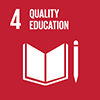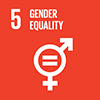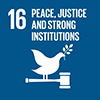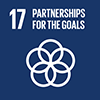Description/achievement of initiative
In 2015, world leaders made a commitment to end all forms of violence against children by 2030, as part of the Sustainable Development Goals (SDGs). This moment presents an historic opportunity to unite the world behind a global, national and local movement to protect the world’s most precious asset – its children. The Global Partnership to End Violence Against Children and its associated fund were created to help achieve this ambitious undertaking – in every country, every community and every family.
Implementation methodologies
The Partnership’s three goals will help us accelerate action and implement work at scale, sharing and implementing evidence-based strategies by building political will, working with countries to accelerate action to tackle the violence that children face, and strengthening collaboration between countries.
The Partnership will build and sustain political will to end violence against children, promoting evidence-based strategies that will lead to significant, sustained and measurable reductions in violence. Most governments accept that violence against children is a serious problem, but few countries are yet to commit to action on a scale needed to achieve measurable reductions in violence. The Partnership will advocate for more urgent action to end all forms of violence, catalyze debate at national, regional and global levels, and make the case for increased investment in preventing and addressing violence.
The Partnership will work with partners to accelerate action to tackle the violence that children face, with a focus on ‘pathfinder countries’ who wish to lead the movement to end violence. Through the SDGs, all countries have made a commitment to ending violence against children. In line with the principle of inclusivity, the Partnership will provide a platform for any country that is prepared to take action to meet this commitment. Our focus will be on legislation, integrated services for preventing and responding to violence, and on access to social services. Children in conflict settings require special attention.
The Partnership will strengthen collaboration among and between countries, and with civil society and other stakeholders, confronting shared threats and developing shared solutions. The universal nature of Agenda 2030 encourages countries to find new ways of co-operating and learning from each other. An important role for the Partnership will be as a platform for transnational action and learning, and a forum for learning and for the dissemination of knowledge. Under this goal and related objectives, the Partnership will also aim to communicate the issues to a wide range of actors and stakeholders.
Arrangements for Capacity-Building and Technology Transfer
The above goals are supported by four cross-cutting drivers: movement building, finance and resources, data and evidence, and monitoring and evaluation.
Movement Building - The Partnership will mobilize a powerful movement behind a common strategy for building and sustaining political will to end violence against children, for accelerating action to end violence at global, regional, national and local levels, and for strengthening collaboration between and among countries, and with civil society, including child led organizations and other stakeholders. Strong communication at all levels will be a critical part of this effort.
Finance and Resources - Prevention of violence is under-funded in most countries, chronically so in many. To date, governments have failed to invest sufficiently in the systems, program and people needed to keep children safe.
The Partnership will make the case to governments, foundations, philanthropists and the private sector that investment in preventing violence against children offers substantial returns, while increasing the impact of expenditure on health, education and other services for children.
Data and Evidence - The Partnership is based on a commitment to evidence. It will use research and data to build political will, underpin effective implementation in country, and to improve sharing and learning between countries and across sectors, building on work done by the Know Violence in Childhood global learning initiative.
The Partnership will make the case to governments and other partners to invest in and strengthen data collection, including incidence and prevalence data, and evidence on costs and effectiveness.
Monitoring and Evaluation - In order to evaluate its work, the Partnership will develop a results framework and a monitoring and evaluation plan. The Partnership, as a learning organization, will also develop and disseminate models and best practice for evaluating the impact of violence prevention initiatives.
Coordination mechanisms/governance structure
The Partnership offers the opportunity for everyone who believes in ending violence against children to come together, combine their efforts and maximize their impact. Governments, international organizations, NGOs and civil society, academia, the private sector, and children themselves can all find a place in this collective endeavor. The Partnership will fully involve all partners in line with the principles of inclusiveness and transparency.
Each of these stakeholders can make a valuable contribution and this will be reflected in the Partnership’s governance arrangements. Governance will be as lean as possible, especially at first. Structures will evolve as the Partnership grows and changes. The Partnership will also take time to get structures right at national level.
The Partnership will have the following governance bodies:
• A Board which will set overall direction and mission, and approve the Partnership strategy, which will be updated after three years.
• An Executive Committee which will develop the annual business plan and budget based on the strategy.
These bodies will be supported by a Partnership Secretariat, which will:
• Develop strategy and policy for Executive Committee approval.
• Lead on programming, advocacy, communication and resource mobilization.
Partner(s)
* UNICEF
* World Health Organization (WHO)
* UN Women
* United Nations Population Fund (UNFPA)
* United Nations High Commissioner for Refugees (UNHCR)
* ChildFund Alliance
* Plan International
* Save the Children
* SOS Children's Villages
* World Vision
* Elevate Children Fund
* Various foundations, private sector, leaders of faith, children and young people







 December 2017
December 2017
 December 2017
December 2017
 December 2020
December 2020
 Time-frame: January 2016 - December 2030
Time-frame: January 2016 - December 2030